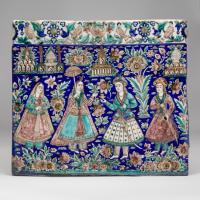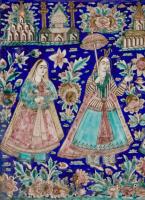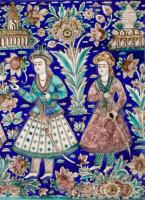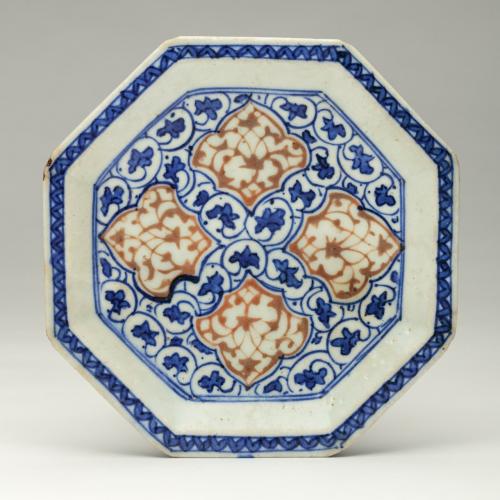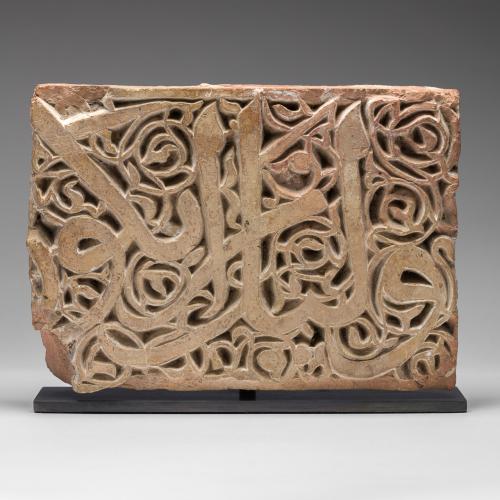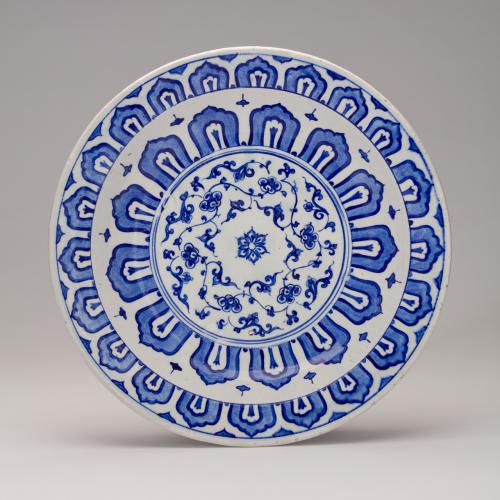
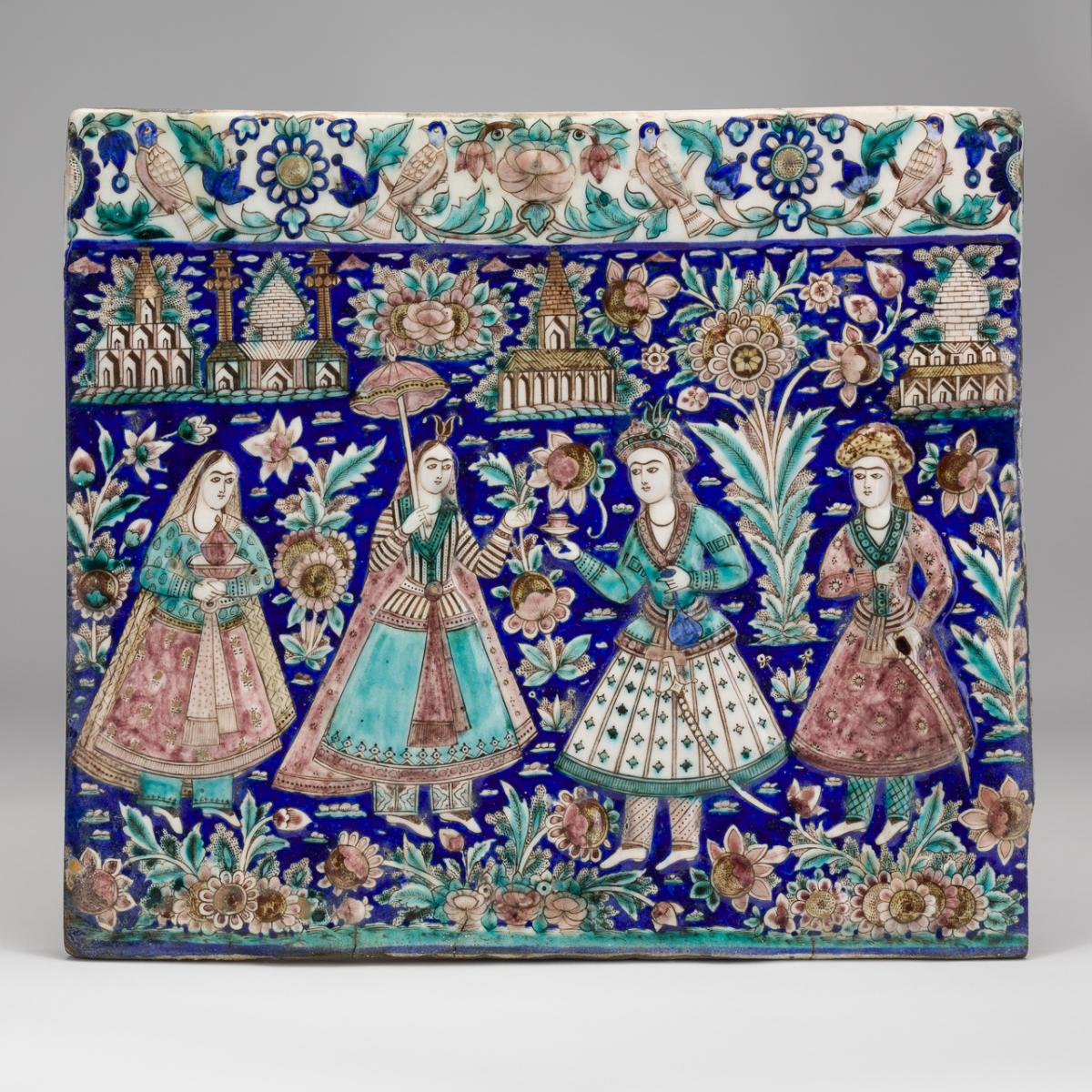
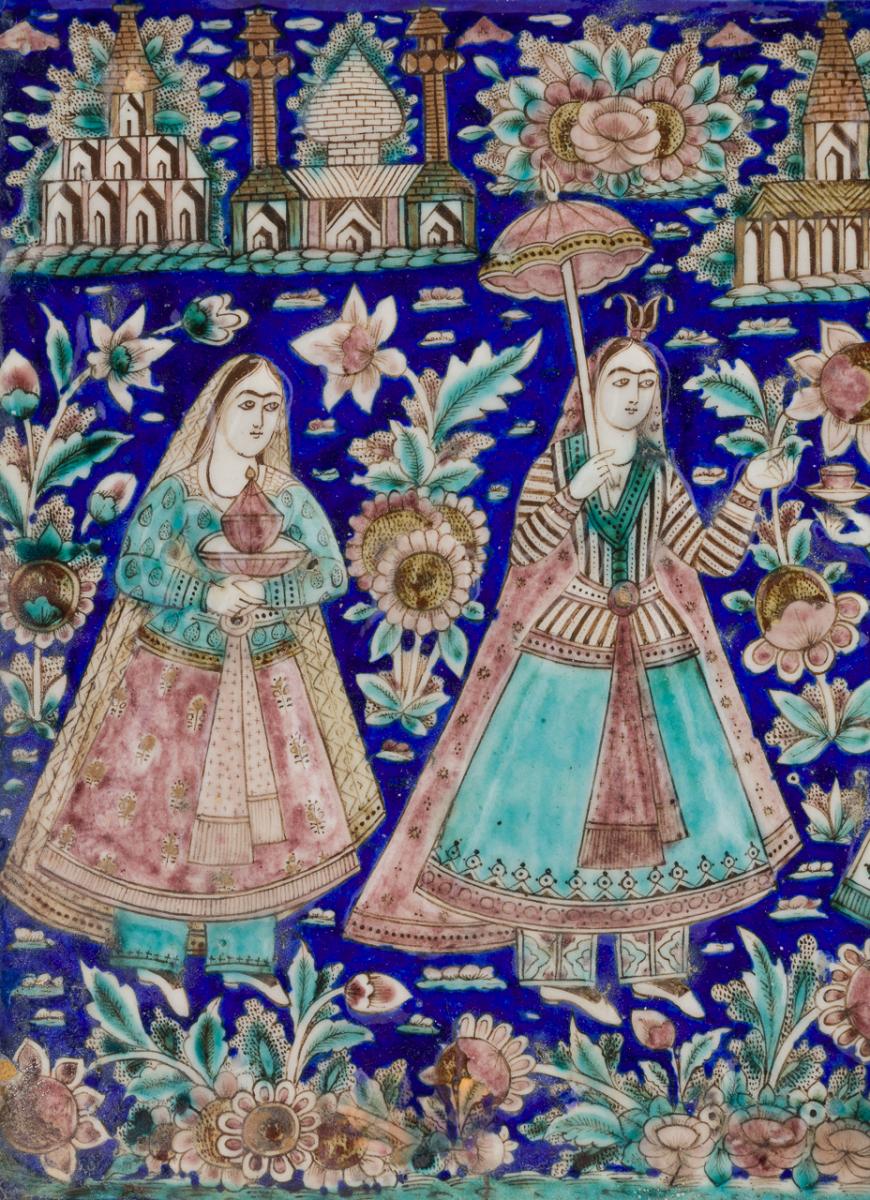
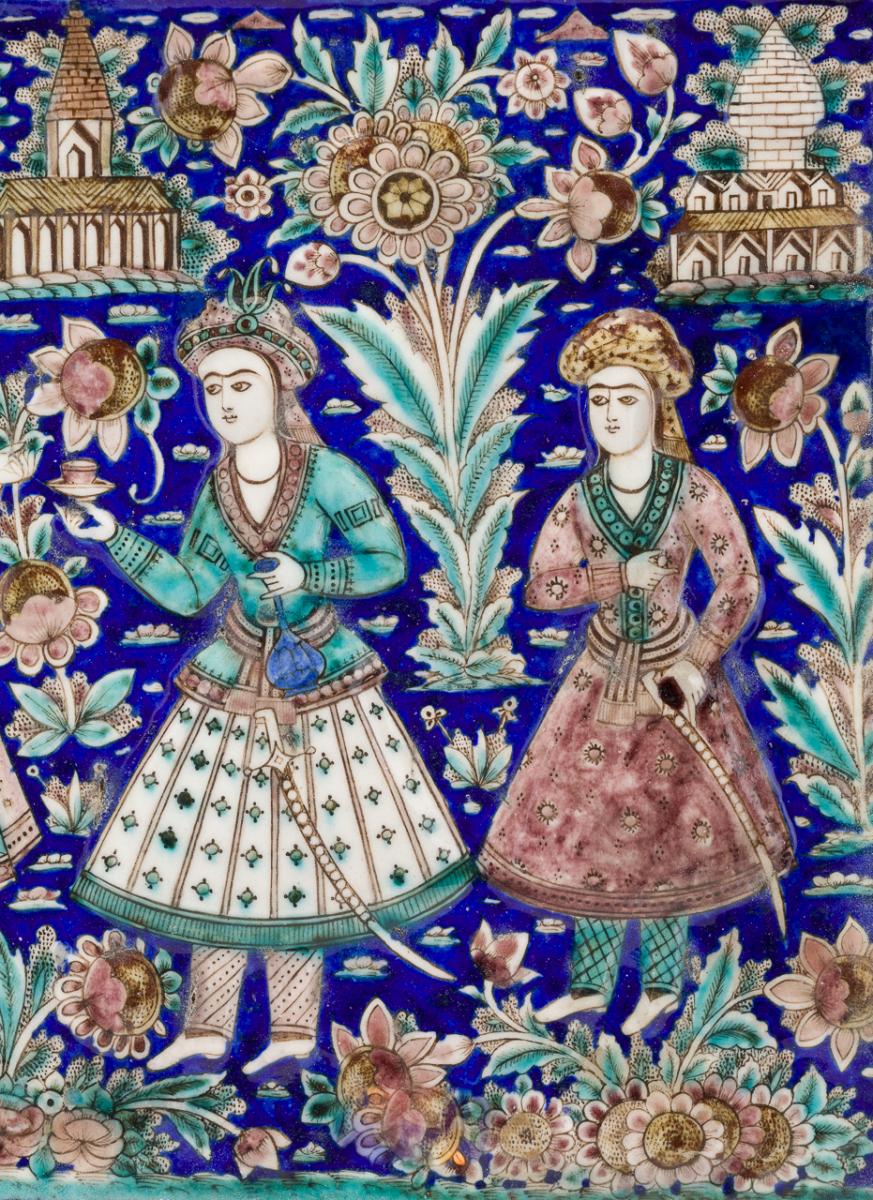
Price on application
This object is eligible for a Certificate of BADA Provenance
The BADA Standard
- Since 1918, BADA has been the leading association for the antiques and fine art trade
- Members are elected for their knowledge, integrity and quality of stock
- Our clients are protected by BADA’s code of conduct
- Our dealers’ membership is reviewed and renewed annually
- Bada.org is a non-profit site: clients deal directly with members and they pay no hidden fees
Qajar Tile.
A rectangular fritware moulded tile, painted with cobalt blue, turquoise, pink, yellow, and black underglaze. The tile depicts the meeting of two royals, accompanied by their attendants. Four buildings populate the background, representing the mosques and Armenian churches of Isfahan. The backdrop is densely packed with flowers, and a horizontal border at the top of the tile is decorated with roses, scrolling vines, and falcons. The garden setting alludes to paradise, the only place in the 19th century Iranian imagination in which men and women could freely come together.1 The prince attempts to hand the woman a cup of wine from the bottle he carries, but the woman, holding a parasol and flowers, has no hands free to take the cup.
This configuration of figures is a relatively common one in Qajar tiles. The scene may recall the meeting of Humay and Humayan, from the 14th century Khamsah of Khvaju Kirmani. The poem tells of the Persian prince Humay’s various quests to find Humayun, the daughter of the Emperor of China, with whom he has fallen madly in love.2 A very similar panel is on display in the Islamic Middle East Gallery at the Victoria & Albert Museum, London (accession no. 230-1887).
1 Salgirli, Saygin. Inside/ Outside Islamic Art and Architecture: A Cartography of Boundaries in and of the Field. London: Bloomsbury, 2021. p. 113.
2 Nayel Barakat, Heba, and Khademi, Zahra. Qajar Ceramics: Bridging Tradition and Modernity. Kuala Lumpur: Islamic Arts Museum Malaysia, 2019. p. 116.
The BADA Standard
- Since 1918, BADA has been the leading association for the antiques and fine art trade
- Members are elected for their knowledge, integrity and quality of stock
- Our clients are protected by BADA’s code of conduct
- Our dealers’ membership is reviewed and renewed annually
- Bada.org is a non-profit site: clients deal directly with members and they pay no hidden fees


